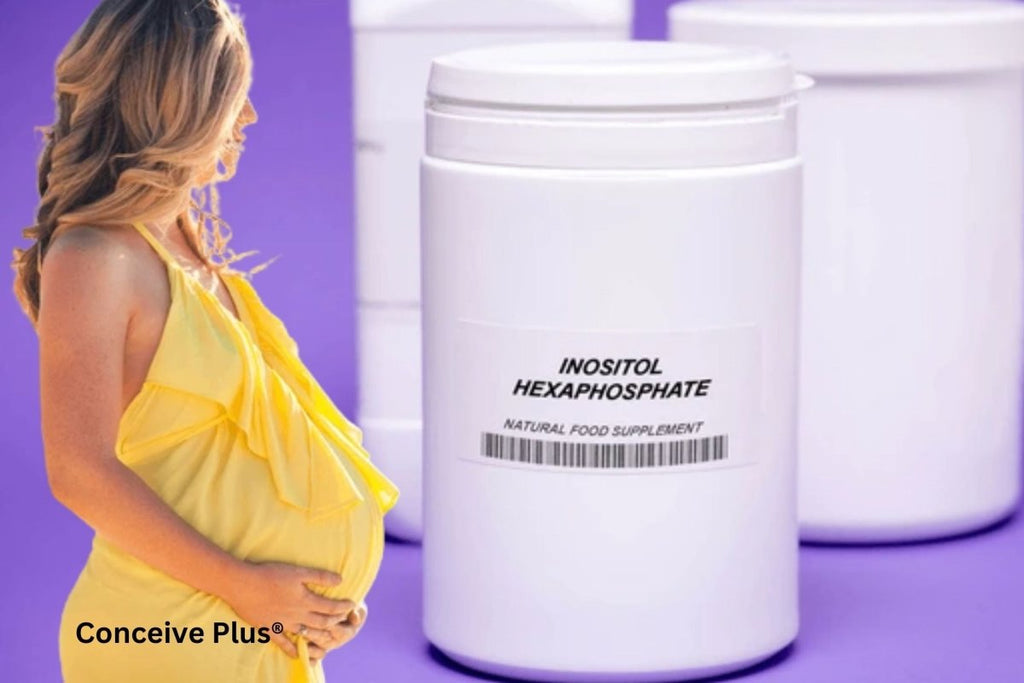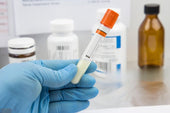Is Your Leukorrhea Discharge Normal? Signs to Watch For

When it comes to women’s health, there are many terms that can sound confusing or even a bit intimidating. One such term is leukorrhea, which most of us refer to simply as vaginal discharge.
Despite its clinical name, leukorrhea is a completely normal part of female reproductive functioning. It has specified roles that support female fertility and overall reproductive health [1]. In this article, we will discuss what does leukorrhea look like, why it occurs, and its role in fertility. The article also explains what various changes in leukorrhea discharge might mean for you.
What Is Leukorrhea or Vaginal Discharge?
Leukorrhea is the medical term for the whitish or clear discharge that many women notice from their vagina. This fluid is produced by glands in the cervix and the vaginal walls and serves a variety of important functions [1].
Image Source: https://sg.theasianparent.com/vaginal-discharge-chart
In most cases, it is completely normal and even a sign that your body is doing what it should. The nature of the discharge can vary between thin and thick, depending on the phase of the menstrual cycle [2]. It might surprise you to learn that nearly all women experience some form of vaginal discharge during their lives. It’s a natural way for the body to clean itself, remove dead cells, and protect against infections.
Leukorrhea helps maintain a healthy balance of bacteria in the vagina, ensuring that harmful organisms are kept in check. In addition to that, this natural fluid plays a significant role in maintaining the overall health of the reproductive system.
Why Is Vaginal Discharge Produced?
The production of vaginal discharge is primarily a protective mechanism. Your body produces this fluid to keep the vagina clean and free from unwanted bacteria. Here are some of the main reasons why vaginal discharge occurs:
-
Protecting Against Infections
Vaginal discharge creates an environment that is a threat to harmful bacteria and viruses. The acidic pH of the discharge helps maintain a healthy bacterial balance in the vagina, particularly lactobacilli [3].
This natural bacterial balance is found effective in fighting off infections. This protective barrier can prevent conditions like bacterial vaginosis and yeast infections, both of which can cause discomfort and require medical treatment [4].
-
Maintaining Vaginal Health
Vaginal discharge helps keep the vaginal tissues well-hydrated and nourished [1]. It acts as a natural moisturizer, which is especially important because the vagina is a delicate area with sensitive tissues. By keeping the tissue soft and supple, the discharge prevents irritation and promotes overall comfort.
-
Facilitating Sexual Activity
Vaginal lubrication is essential for comfortable sexual intercourse. The natural discharge produced by your body ensures that the vagina remains moist, reducing friction during sex. This lubrication not only increases pleasure but also minimizes the risk of small tears or irritations that could lead to infections.
-
Reproductive Health Indicator
Variations in vaginal discharge can also serve as early warning signs of changes in your health. For instance, a sudden change in color, consistency, or odor can indicate an infection or an imbalance in the vaginal natural bacterial balance. Paying attention to any sudden changes can help you seek medical advice promptly if something seems off.
How Vaginal Discharge Supports Female Fertility?
As you pay attention to your cycle, you might notice that the consistency and amount of discharge can vary throughout the month. These changes are influenced by the hormones that control your menstrual cycle, and they can actually give you helpful clues about when you're most fertile—or, conversely, when you're experiencing infertile discharge, which typically appears when conception is less likely. Here is how:
-
Before Ovulation
At the start of your menstrual cycle, your leukorrhea discharge is thicker, stickier, and sometimes cloudy. This is your body’s way of creating a protective barrier over the cervix, inhibiting harmful bacteria from entering the uterus [5].
During this phase, estrogen levels are rising, but ovulation hasn’t occurred yet. The thick mucus is not sperm-friendly, making it difficult for sperm to travel. This means pregnancy chances are low at this stage.
-
At the time of Ovulation
As your body gets closer to ovulation, hormonal changes lead to an increase in estrogen. This hormone causes the cervical mucus and vaginal discharge to become more watery and stretchy — like egg whites in consistency [6].
This egg-white cervical mucus supports female fertility as it creates a suitable environment for sperm transport. It helps the sperm to travel through the cervix into the female reproductive tract, where fertilization can occur.
-
After Ovulation
After ovulation, the cervical mucus becomes thick again, leading to thick vaginal discharge. This change occurs due to rising levels of progesterone, which signals that the window for conception has closed until the next cycle.
This natural variation in cervical mucus and, as a result, vaginal discharge is like a built-in fertility tracker. Many women monitor these changes—often comparing them to ovulation discharge photos—to detect ovulation, which is when they are most fertile. This way, they can naturally either increase the chances of pregnancy or avoid it.
Variations in Vaginal Discharge
A woman may notice different variations in vaginal discharge during her reproductive years. If she understands what does leukorrhea look like on normal days and how abnormal variations appear, she can make more calculated decisions about her fertility and overall reproductive health.
Normal Variations
Here are some common normal variations in vaginal discharge that are usually not a sign of any problem:
- Clear or White Discharge: This is typically what most women experience. The amount and thickness can vary depending on the phase of your menstrual cycle. A clear or white discharge without itching, burning, or a strong odor is usually normal.
- Egg-White Consistency: Around ovulation, the discharge may become more watery and stretchy, similar to egg whites. This is a sign that a woman is on her peak fertile days. Women who track their cycles typically identify their ovulation days with the help of this sign [6].
- Slightly Milky Appearance: At times, the discharge can appear slightly milky. This is a normal part of your cycle, especially when it occurs during the early and late phases.
Unusual Variations in Discharge to Watch For
While most changes in discharge are normal, here are certain variations that could indicate an underlying issue:
- Yellow or Green Discharge: If you notice a prominent yellow or green tint in your leukorrhea, it could be a sign of an infection. Conditions such as bacterial vaginosis or a sexually transmitted infection (STI) can cause these changes. It’s important to consult a healthcare provider if you notice these colors.
- Frothy or Bubbly Texture: A frothy or bubbly texture of vaginal discharge can be a symptom of a yeast infection. Along with the unusual texture of leukorrhea, the other symptoms that women experiencing yeast infection may notice include itching or irritation [7].
- Thick, Clumpy Discharge: While cervical mucus naturally thickens after ovulation, if you notice clumps or a significant change in the texture during ovulation, it could be a sign of an infection or another condition that needs attention.
- Unpleasant Odor: A strong, foul odor is another signal that something might be off. Normal vaginal discharge should have only a mild scent. A persistent, unpleasant odor may indicate bacterial vaginosis or another infection.
- Itching, Burning, or Irritation: If you experience discomfort, itching, or burning sensations along with changes in your discharge, it is a good idea to seek advice from a healthcare professional. These symptoms can sometimes be the first signs of an infection or an allergic reaction.
It’s important to note that while these variations can indicate potential issues, they are not always concerning. Many factors, including changes in hormones, diet, or even stress, can cause temporary shifts in the nature of your discharge. However, if the changes persist along with discomfort, it is recommended to talk to a professional for a detailed evaluation of your reproductive health.
When to Consult Your Doctor Regarding Leukorrhea?
Even though leukorrhea is typically a normal bodily function, there are times when you should consider speaking with a healthcare provider.
For example, if you notice a significant and lasting change in the color, consistency, or amount of your discharge, it might be a sign that something is not quite right. Symptoms such as itching, burning, pain during urination, or discomfort during intercourse could indicate an infection and should be evaluated.
Similarly, a strong, unpleasant odor that does not go away with regular hygiene practices should also be evaluated. While hormonal changes after menopause can alter vaginal discharge, any sudden or prominent change should be discussed with your doctor to rule out infections or other health issues.
Also, fever and abdominal pain could be signs of a more serious infection, such as pelvic inflammatory disease (PID), and require immediate medical attention.
The Bottom Line
Leukorrhea discharge, commonly known as vaginal discharge, is a completely normal part of the female body functioning. This discharge is produced by glands in the cervix and its composition and texture can change throughout the menstrual cycle.
Some important roles of leukorrhea include protecting the reproductive tract against infections, moisturizing vaginal tissues and facilitating sexual activity. Variations in vaginal discharge occur, which, in some cases, are normal while, in other cases, hint at some underlying issue.
Signs like greenish or yellowish tint in discharge, foul smell, and itching and burning sensations need proper evaluation to rule out the underlying cause.
FAQs
-
Can leukorrhea discharge indicate pregnancy?
An increase in leukorrhea can be an early sign of pregnancy in some cases. Pregnancy related hormonal changes stimulate more cervical mucus production, making the discharge more prominent in early weeks of pregnancy. However, it’s not a definitive sign and you should confirm pregnancy through a home pregnancy test.
-
How can I maintain healthy vaginal discharge?
To maintain healthy vaginal discharge, focus on good hygiene by using gentle soaps and wearing breathable cotton underwear. Staying hydrated, eating a balanced diet, and reducing sugar intake can also help keep everything in balance and reduce the risk of infections.
Resources Used
- Professional, C. C. M. (2025a, March 19). Vaginal discharge. Cleveland Clinic. https://my.clevelandclinic.org/health/symptoms/4719-vaginal-discharge
- Thiyagarajan, D. K., Basit, H., & Jeanmonod, R. (2024, September 27). Physiology, menstrual cycle. StatPearls - NCBI Bookshelf. https://www.ncbi.nlm.nih.gov/books/NBK500020/
- Liu, P., Lu, Y., Li, R., & Chen, X. (2023). Use of probiotic lactobacilli in the treatment of vaginal infections: In vitro and in vivo investigations. Frontiers in Cellular and Infection Microbiology, 13, 1153894. https://doi.org/10.3389/fcimb.2023.1153894
- Sobel, J. D., & Vempati, Y. S. (2024). Bacterial vaginosis and vulvovaginal candidiasis pathophysiologic interrelationship. Microorganisms, 12(1), 108. https://doi.org/10.3390/microorganisms12010108
- Hansen, L. K., Becher, N., Bastholm, S., Glavind, J., Ramsing, M., Kim, C. J., Romero, R., Jensen, J. S., & Uldbjerg, N. (2013). The cervical mucus plug inhibits, but does not block, the passage of ascending bacteria from the vagina during pregnancy. Acta Obstetricia Et Gynecologica Scandinavica, 93(1), 102–108. https://doi.org/10.1111/aogs.12296
- Professional, C. C. M. (2025c, March 31). Cervical mucus. Cleveland Clinic. https://my.clevelandclinic.org/health/body/21957-cervical-mucus
- Institute for Quality and Efficiency in Health Care (IQWiG). (2022, April 4). Overview: Vaginal yeast infection (thrush). InformedHealth.org - NCBI Bookshelf. https://www.ncbi.nlm.nih.gov/books/NBK543220/
































